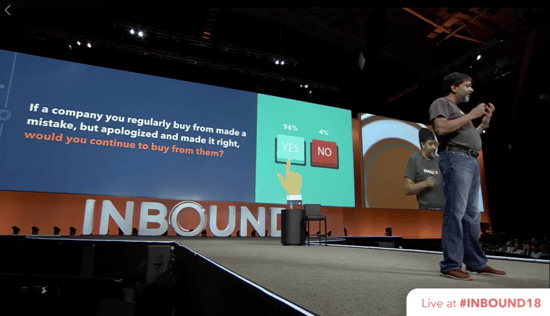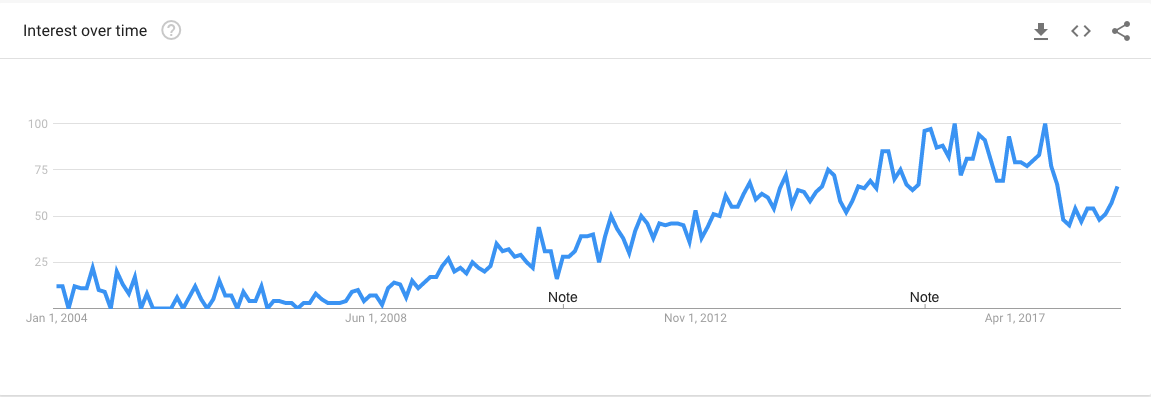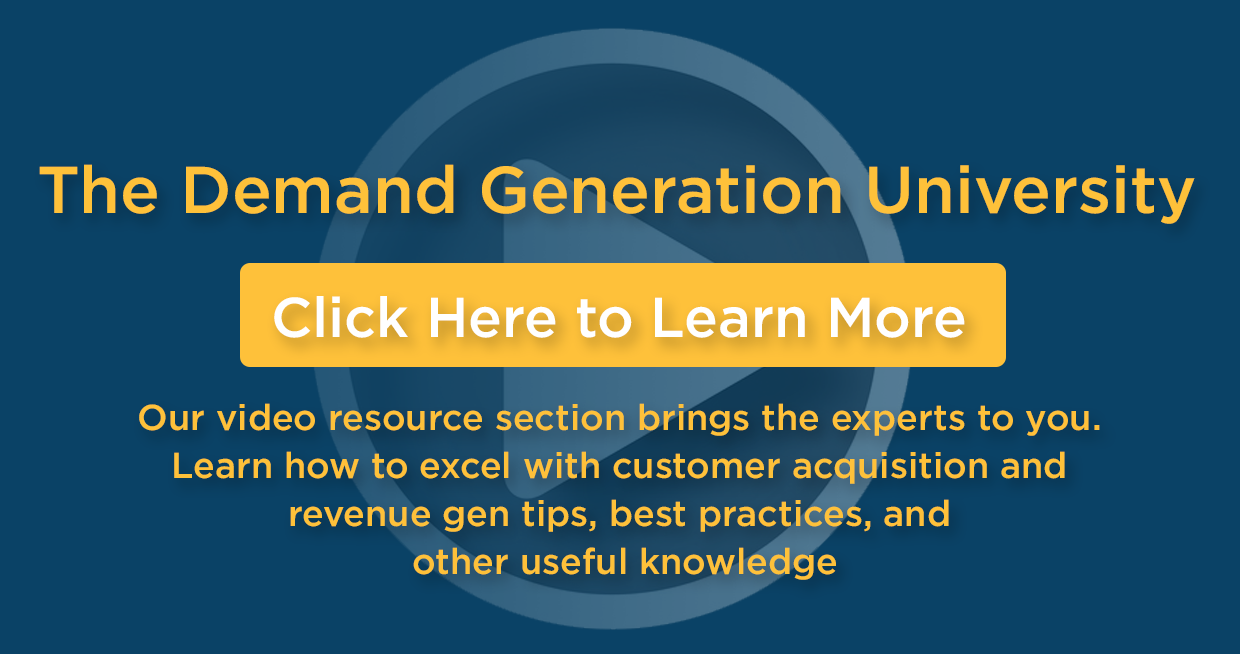 Another year…another Inbound--the largest marketing conference in the world. As the conference was nearing its end, I came across HubSpot’s CEO, Brian Halligan. HubSpot hosts this “Woodstock for Marketers,” and as the host, he asked me what I thought of this year’s Inbound. I told him, “As always, it’s been great. The interesting thing is that each year I think I cover fewer square feet of the conference, while taking more steps.”
Another year…another Inbound--the largest marketing conference in the world. As the conference was nearing its end, I came across HubSpot’s CEO, Brian Halligan. HubSpot hosts this “Woodstock for Marketers,” and as the host, he asked me what I thought of this year’s Inbound. I told him, “As always, it’s been great. The interesting thing is that each year I think I cover fewer square feet of the conference, while taking more steps.”
After 95,000 steps and dozens of deep conversations with martech & marketing agency executives, clients, prospects and general attendees, I came away with renewed energy. (Candidly, I came away exhausted, but after a weekend of recovery the renewal set in).
If you weren’t able to make it to Inbound this year, and even if you were, here are my seven biggest takeaways:
The Inbound Refresh
HubSpot and the Inbound marketing movement are now 12 years old. As the chart from Google Trends indicates, Inbound was beginning to feel a bit old.

For the last year, at least, HubSpot has been assessing its past while they’ve been planning for the future, and Inbound18 served as, shall we say, the conference's bat mitzvah.
Yes, that’s right, Inbound18 ushered in the adulthood of the Inbound Marketing movement:
- The “funnel” is no more, replaced with the more sophisticated flywheel.
- This year topics like ABM, sales and service, video, conversational, chat and more were not just included - they were embraced. The Inbound movement realizes that it takes a village to grow a business.
- Most importantly, from my view at least, they have abandoned the old, myopic four-step methodology (attract - convert - close - delight) to a three-step framework (attract - engage - delight) that is far more integrated and aligned with how go-to-market strategies are designed.
Despite some of the naysayers, Inbound isn’t going anywhere and will continue to evolve as a core component of a growth company's efforts.
The Importance (and Myth) of Technology
Technology and the role it plays was a hot topic as well. Unequivocally, technology is growing in importance, and the conference clearly aligned with this fact. From HubSpot's product announcements (more on that from me next week) to the exhibition floor in Club Inbound and breakout sessions, technology was either the star or played an important supporting role.
If one were a “fly on the wall” of most conversations around technology, you would think that everyone was experiencing runaway success as a result. However, if you listened closely, you’d realize that there is still little detail about how different martech and salestech products are being used, and even fewer facts about the results that are being achieved.
FOMO & The Next Thing
Martech and salestech are clearly in their hype-phase (btw, is one cynical if they wonder if they’ll ever be out of their hype-phase?), but technology isn’t alone here.
ABM, conversational marketing, live chat, bots, AI, machine learning, deep learning, embedded platforms, video, video-bots, middle-out compression and more (just kidding on the last two) were rolling off the tongues of attendees. All were attuned to discovering that next thing that will be the be the difference between success and failure.
There is a powerful fear-of-missing-out-mania that is bigger than I can ever remember it being. Candidly, the FOMO rate is highly indicative of the end of a market cycle. The closest I’ve seen tech FOMO to its current rate is late 1999/early 2000.
The sad thing is that while everyone is seeking out the next thing, very few have actually mastered the current (or last) thing. My biggest takeaway--and the biggest execution advantage for most businesses--is that while everyone is trying to jump to the next thing, the ones who maximize and exploit what is available to them now will end up the winners.
HubSpot is Moving Upstream
For 12 years, HubSpot has been the champion of the small and medium-sized business. While their competitors sought out the enterprise market, HubSpot focused on SMBs.
While the executives at HubSpot continue to say all of the right things about maintaining this commitment, there can be no question that HubSpot is looking to go after larger companies. The biggest product announcements were focused on their new enterprise suite of products (marketing, sales, and service). I’ll be sharing a comprehensive review of these products in the coming weeks (with sales next week).
To Be A Platform or To Not Be A Platform: This Is Apparently The Question That HubSpot is Pondering
For three years, HubSpot has been signaling that their long-term plan is to become a true platform, and to be the “one system of truth for small and medium businesses.” Their Connect program has grown to become truly an ecosystem with more than 200 companies participating (and growing).
During his keynote highlighting this year’s product announcements, HubSpot’s head of product Chris O’Donnell shared “HubSpot’s commitment to becoming an API first company,” which is a crucial component of being a platform.
I remain hopeful that this is the direction they are heading. I’m confident that a platform-focused future is better for HubSpot, their stockholders (I am one), and their employees, partners and customers.
However, that future is less than preordained, and, clearly, is not the vision of the entire company. HubSpot announced a number of powerful improvements to their core product and launched a number of new features that position HubSpot as a complete and total marketing, sales and services solution. At the same time, many of their larger and “elder” connect partners, are complaining more vociferously about their inability to access key components of the system and being at an access disadvantage against native HubSpot features.
I predict that 2019 will be the make or break year for the platform vision.
Marketing Got You Into the Playoffs, But It’s Going to Take Sales To Win The Championship
I remember it like it was yesterday. My first Inbound conference. The story was marketing, marketing, marketing. The video vignettes shared hysterical satire around the behavior of salespeople. Sales was broken, and the top of the funnel was going to be the salvation for growth businesses.
Since that time, HubSpot specifically, along with the Inbound movement in general, has increasingly gained the understanding that the role of sales is as important as ever.
If I hadn’t known any better, this year's conference would have made me think that Inbound was born in the sales department, not marketing. Sales was front and center and permeated every aspect of the content and conversation for Inbound18.
No surprise really. The lesson for all is to ensure that you’re optimized for customer acquisition.

 Doug Davidoff
Doug Davidoff